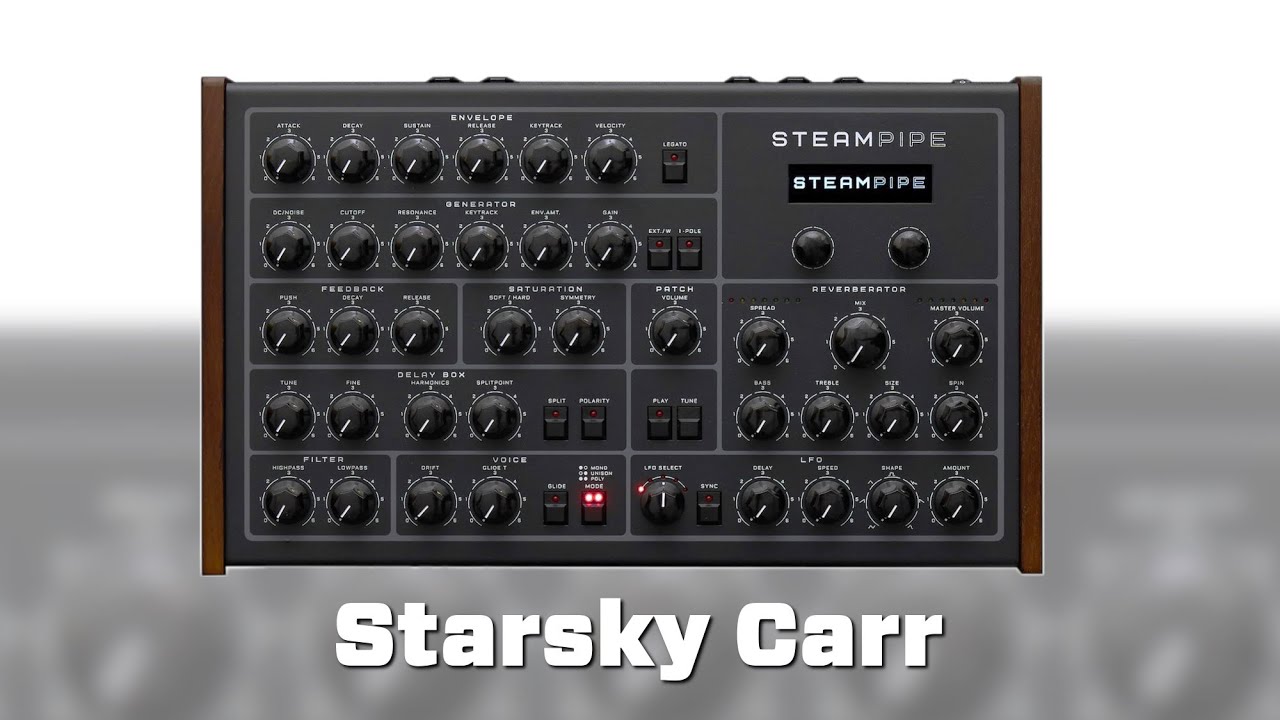It’s Steampipe day! (actually, Friday was, but I was out for holidays)
First impressions after two hours:
Build
It feels like money. There’s something about synths that are just, like, metal boxes and a sea of pots. They just feel worth it.
The Synclavier Regen? Metal but no pots. The Analog Four? Metal but not enough pots. The Roland System 8? Pots but everything’s plastic. These are each S-tier synths for me and justify their cost in a hundred different ways. But you have to dig into them to find the value.
The Voyager. The Peak. The Implexus. For those I don’t have to dig. I see them and am instantly “that’s a $1,000+ synth”. The Steampipe nails this feeling all the way down, right out of the box. It feels like equipment.
Sound
I thought the EP-1320 was going to be the medieval synth of 2024, but Steampipe is squeaking in under the buzzer to give it a run for its money. The drones, the chiffy flutes, the horns of every size, buzzy reeds, and of course plucked strings and mallets most commonly associated with physical modeling really lend themselves well to post-classical sounds.
And because everything is modeled and therefore can be played well outside its normal physical limitations, it’s easy to get other-worldly, uncanny-valley vibes going. I predict this being much sought after in dungeon synth circles.
Holy Heck the Reverb
It’s really nice. Really, really nice. Looking at the adjustable parameters and 112dB’s involvement, I’m going to guess it’s similar to Erica’s NightVerb, and 112’s Micron Reverb… and if so I’ll have to pick those up because dang.
Default dry sound:
Everything 12 o’clock except for Spin, which is zero:
Same, but with Spin maxed out:
I cut off a bit of the tails here so I wasn’t waiting around all day. But keep in mind the reverb Size can go all the way up to essentially infinite.
Also, the way Mix works is really smart. Rather than it summing reverb + dry, it’s more like a send. In other words, at zero mix, whatever is bouncing around in the reverb’s tank can still be heard, but nothing more is added to it. That means you can crank the Size way up, twist up Mix, play a chord, then have that drone while you move mix down to zero and solo over it. This reverb is going to enable a lot of ambient.
UI
The screen is large enough to do what it needs to. It doesn’t feel artificially small.
The menus are well laid out and have charming animations to them that make them feel polished. The menu encoders are unlabeled, and that makes it awkward to remember which one navigates “back” (it’s the right one, and always feels like it should be the left one, but no big deal).
Pretty much everything in the menu is preset browsing or system config. There are so many front panel controls, there’s just not really any call for diving.
Criticisms
I’m only a few hours in, but so far, I’m delighted. If I had to bet, I’d guess that the criticisms will be that it’s hard to patch for, though. Working with it is very different from any other synth I’ve owned and I’m having to develop all new intuitions for it. Those coming from Steampipe for Reaktor will probably feel right at home, but for the rest it’s going to be a slog.
I also think some will find a lot of “sameiness” in the sounds. There’s a large field to explore, but sounds tend to cluster around the local maxima of pipes, horns, strings, mallets etc. Expression means those maxima are broader than usual, but only time will tell what other gems can be mined from the Steampipe.
And it will take time. But it will be a pleasure to toil away.



